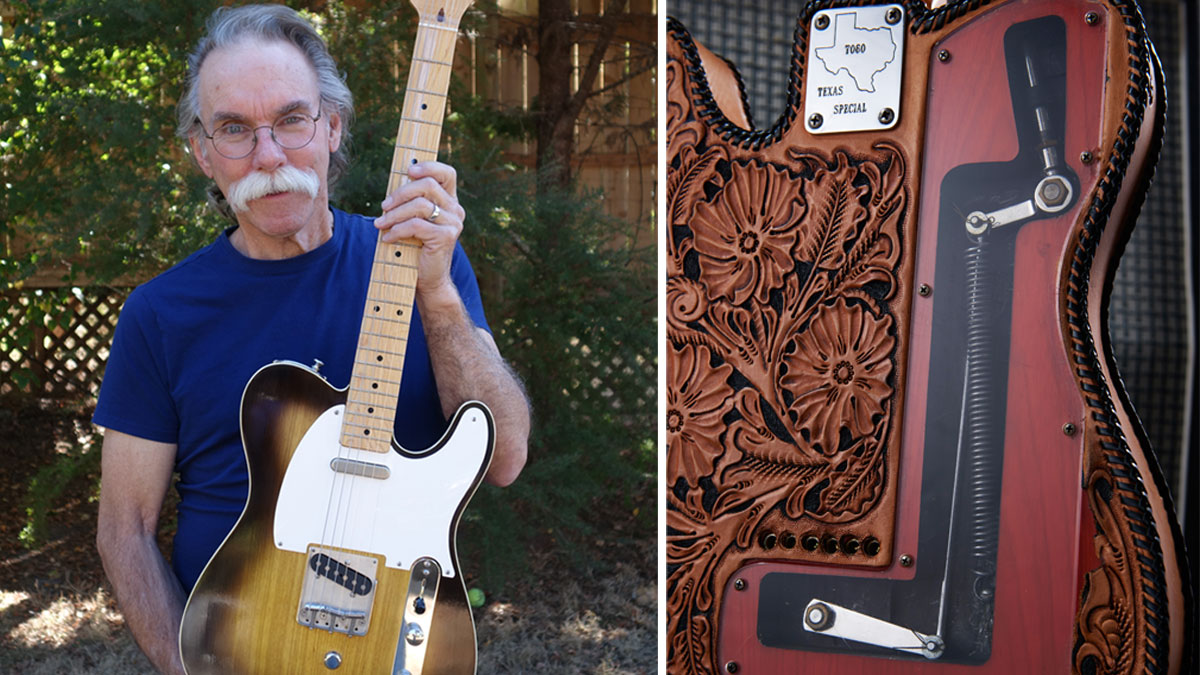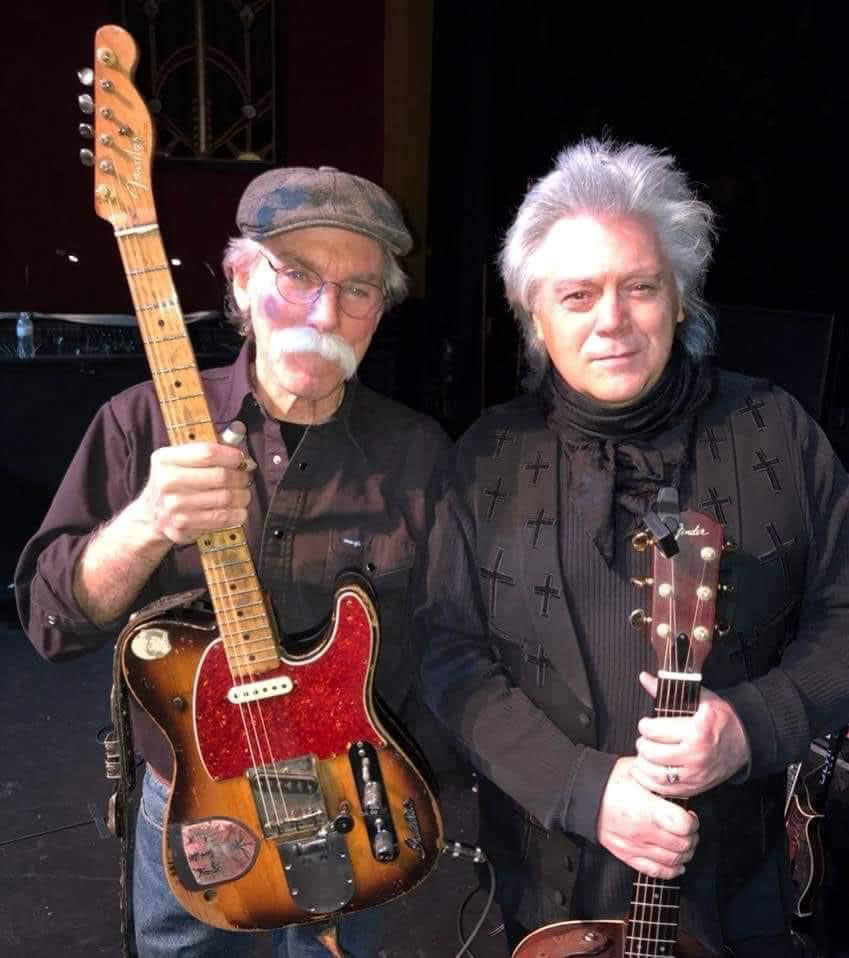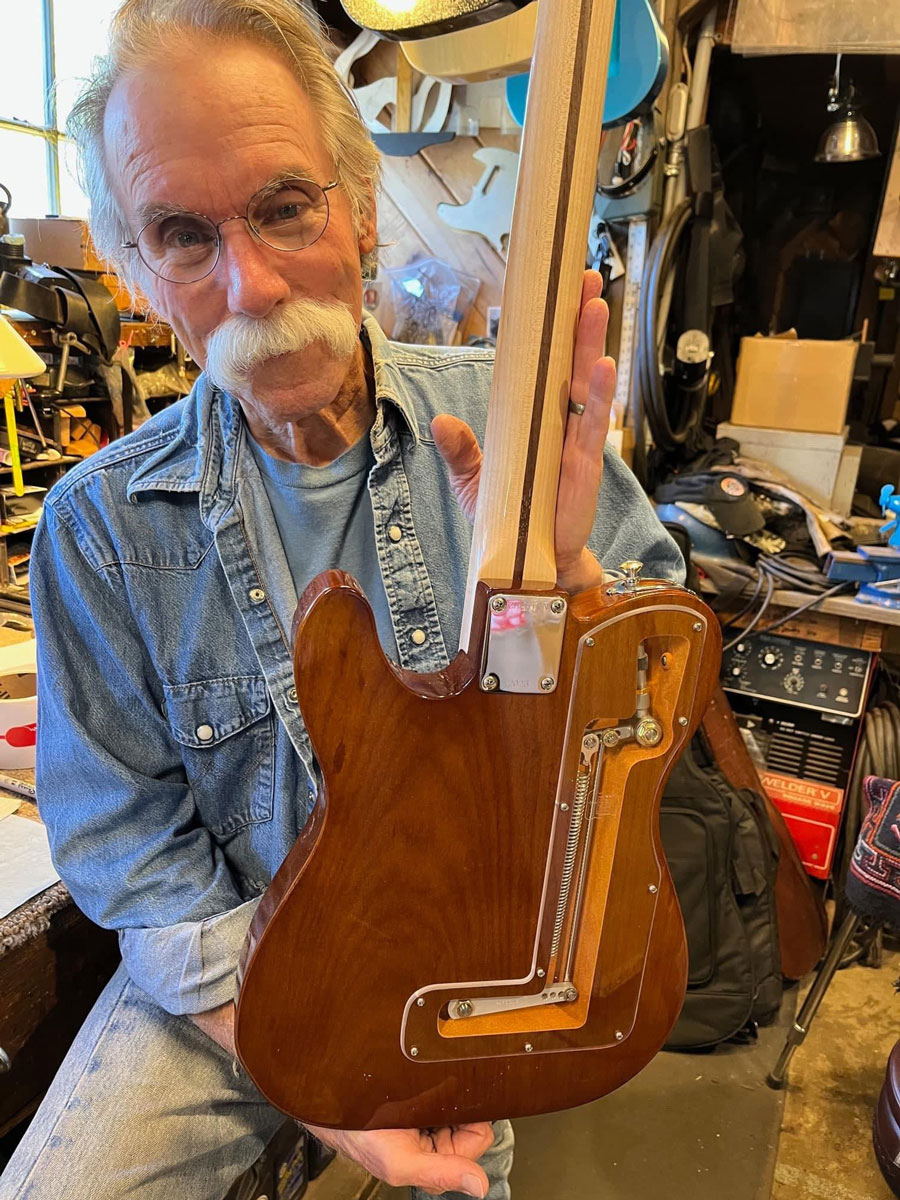“I'm still slammed with orders. Each B-Bender is made with care and love, just like I did with the first one for Clarence White”: How Gene Parsons reinvented electric guitar playing with the B-Bender
He was the drummer for the Byrds, but Parsons is best known in guitar circles for pioneering the Parsons/White B-Bender, a mind-bending mechanical contraption that changed the face of country guitar playing and beyond, finding fame in the hands of Marty Stuart, Ricky Skaggs and Jimmy Page

Given his reputation as a mad scientist within the guitar world, it's funny to think that Gene Parsons – the co-inventor of the B-Bender – was actually a drummer by trade.
Of course, Parsons – a member of the Byrds from 1968-1972 and, later, the Flying Burrito Brothers – always harbored an interest in the guitar. Why else would he move to assemble seemingly arbitrary parts (to a non-believer) into a contraption that would change the face of country music and its adjacent genres forever?
"Tinkering with things and building instruments always intrigued me," Parsons tells Guitar World from his California Desert home. "And before the B-Bender, I actually manufactured a couple of banjos for Earl Scruggs. But doing that gave me all sorts of ideas, leading me – along with Clarence White – to mess around with string bending and things like that."
It was that sense of experimentation that pushed Parsons and White to invent the B-Bender, a device that allows guitarists to bend the B string up a whole step using an arm, palm or hip movement, typically using the guitar's strap.
"Clarence loved his Telecaster," Parsons recalls. "But he wanted to bend the strings in ways you simply couldn't. Before the B-Bender, Clarence would essentially pull the B string or the high E string over the nut to chime in or pull it over to raise it a full tone or a halftone. But that was a lot of work."
He continues, "And one day, we were in a session, and Clarence said, 'Boy… this is rough; I wish I had three hands.' So, I literally came over and pulled the string over the nut for him to get the sound we wanted. The whole thing was pretty crude and made us realize we needed to do something different.
"So, Clarence told me, 'Gene, you're a machinist… do you think you can figure out a way to do what we're trying to do without it being so much work?' I thought about it and said, 'Yeah... I bet I can.'"
Get The Pick Newsletter
All the latest guitar news, interviews, lessons, reviews, deals and more, direct to your inbox!
He had a feeling it would be useful, but there was no way Parsons could have known that his radical invention would have such staying power.
"I had no idea," Parsons laughs. "After Clarence asked me to make something, I went home and rounded up some old steel guitar components, bicycle cables, and whatever else I could find. I sort of had an idea in my mind of how I'd do it, but I was in no position to say if it would actually work."
But work it did, and the Parsons/White B-Bender was born. Still, it needed several tweaks before settling on the initial configuration that would make the device famous.
"Clarence didn't want to play pedal steel," Parsons tells us. "He said to me, 'I want a guitar that I can put in the case, and it has everything on it when I pick it up.' See, Clarence didn't want to move his hands out of their normal position while playing, which was the problem in the first place. But he also didn't want to be sitting. That made the whole thing tricky."
Settling back with a wry smile, Parsons recalls the B-Bender's breakthrough moment: "So, what I did was I came up with the idea of using the shoulder strap to actuate a level. I presented that to Clarence, and boy, he loved it. So, I drew up a design, rounded up parts, and presented that to Clarence. It was at that point that he handed over his Tele and told me to install it."
Anyone who knows the legend of Clarence White's '56 Tele knows that the Byrds' guitarist loved his curio more than life itself. So, when Parsons presented the drastically altered guitar to White, it was something of a shock.
"Oh boy," Parsons recalls. "The morning after, we met for coffee, and I slid that Tele across the table, and Clarence was stunned. He said, 'I guess we're at the point of no return…' and I said, 'Yeah… we are.' But thankfully, after he tried it out, he loved how it came out. The B-Bender worked exactly as intended. It remained his main guitar for a long time."
"It's the same guitar that Marty Stuart plays to this day. Save for a few repairs over the years, it's unchanged and has all the original parts. The issue with that guitar is I made it before we started recessing the parts into the guitar's body. So, it has everything outside the body and can be a bit cumbersome. I've offered to service it for Marty, but he won't let me touch it – he feels it might lose the magic."

The B-Bender was a success. In the ensuing years, notable players including Ricky Skaggs, Jimmy Page, Keith Richards and Charlie Starr have deployed the invention in various six-string endeavors. But for the most part, 45 years on from its 1968 inception, the heart and soul of what makes the B-Bender tick remains. Still, Parsons, ever the technician, has streamlined the process and device for better fit and form.
"Today's design is way smoother," Parsons says with pride. "It's quieter, lighter, and more compact. What I made now fits right into the guitar. And over the years, I came to find that it needed a robust set of bearings because they need to stand up to the wear and tear. Now it's designed to live with the player for the entire life of the guitar. I could do that by using bigger bearings and more sturdy shafts while manufacturing it so that it doesn't alter the guitar's overall weight too much. It's a nuanced thing."
When asked if he's changed the atheistic side of the B-Bender, Parsons added: "I used to use an all-aluminum backplate that had to be polished all the time. But they weren't satisfactory because they would get tarnished too easily. So, I started making chrome-plated brass plates, but those were too heavy."
"So, the way I got around that was just using high-quality plexiglass," Parsons reveals. "I still have people ask for metal plates, and I oblige them. I have a few left in stock from years ago, but that only happens every five or so years with people who want it to be as close to the original idea as possible. But I feel the plexiglass is attractive because it lets you see all the components at work, which is cool because I polish the stainless parts now."

Fit and finish aside, at its core, the B-Bender was bred through ingenuity and utility – it was always meant to serve a specific purpose regardless of its satisfying looks. And Parsons, certainly more than anyone, knows this. It's for this reason that to this day, even though he's on the doorstep of 79 years of age, Parsons builds each Parsons/White B-Bender by hand in his small Mojave Desert workshop.
Parsons has an unmistakable pride when he talks about his invention, but remains modest regarding its impact: "I have no idea how to measure the importance of it. It's an interesting question, though. I guess it's become an important and integral part of that style of guitar playing, right?"
"It's certainly important within country music," he says. "But I've heard people use it in jazz and even Brazilian music. But honestly, I have no clue how to measure it. But I can tell you that I'm still slammed with orders. Even though other people have tried to make their own B-Benders, mine are still more robust."
He concludes, "I take great care when making these. I want people to know that I still make these all by myself. There are no chintzy parts, and each B-Bender is made with care and love, just like I did with the first one for Clarence. So, I have no clue how to measure the importance, but I know how I do it has to count for something."
- For more information on the B-Bender, head to StringBender.com.
Andrew Daly is an iced-coffee-addicted, oddball Telecaster-playing, alfredo pasta-loving journalist from Long Island, NY, who, in addition to being a contributing writer for Guitar World, scribes for Bass Player, Guitar Player, Guitarist, and MusicRadar. Andrew has interviewed favorites like Ace Frehley, Johnny Marr, Vito Bratta, Bruce Kulick, Joe Perry, Brad Whitford, Tom Morello, Rich Robinson, and Paul Stanley, while his all-time favorite (rhythm player), Keith Richards, continues to elude him.
“It holds its own purely as a playable guitar. It’s really cool for the traveling musician – you can bring it on a flight and it fits beneath the seat”: Why Steve Stevens put his name to a foldable guitar
“Finely tuned instruments with effortless playability and one of the best vibratos there is”: PRS Standard 24 Satin and S2 Standard 24 Satin review


![A black-and-white action shot of Sergeant Thunderhoof perform live: [from left] Mark Sayer, Dan Flitcroft, Jim Camp and Josh Gallop](https://cdn.mos.cms.futurecdn.net/am3UhJbsxAE239XRRZ8zC8.jpg)







